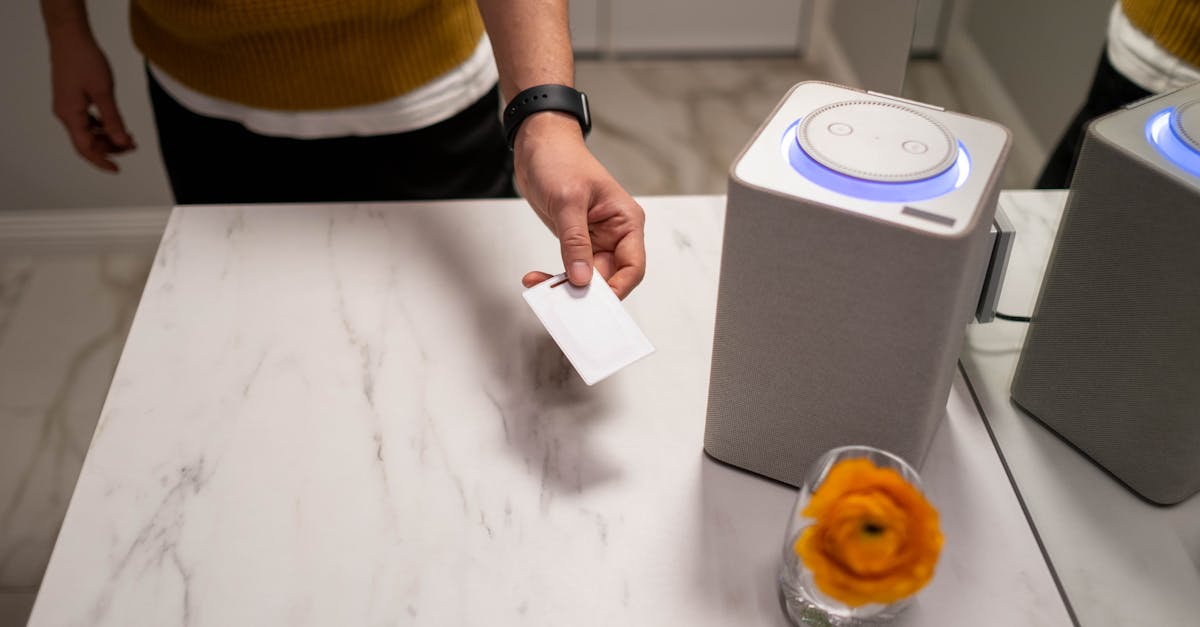Imagine walking into your home and having it greet you like a long-lost friend. With home automation voice commands, that dream’s just a shout away. Gone are the days of wrestling with light switches or fumbling for remotes. Now, a simple “Hey Google, turn on the lights” can transform your living room into a cozy haven—or a disco party, if that’s your vibe.
Table of Contents
ToggleOverview of Home Automation Voice Commands
Home automation voice commands streamline control over various household features. Users can effortlessly manage lighting, temperature, security systems, and entertainment devices through vocal instructions. This advancement enhances the convenience and efficiency of daily routines.
Devices like smart speakers, including Amazon Echo or Google Nest, serve as central hubs for these commands. Instead of reaching for a switch or remote, users issue commands such as “Alexa, lock the front door” or “Hey Google, set the thermostat to 72 degrees.” This shift not only promotes ease of use but also supports accessibility for individuals with mobility challenges.
Voice command systems operate through natural language processing, allowing them to recognize diverse phrases and respond appropriately. Users appreciate the personalized touch; they can create customized commands for specific tasks, like “goodnight” to turn off all lights and set alarms simultaneously.
Interaction with home automation systems often becomes intuitive and straightforward. Various manufacturers offer compatibility with numerous devices, enabling a cohesive ecosystem. For instance, a simple phrase like “turn on the TV” activates multiple devices, enhancing the viewing experience without manual adjustments.
Security features integrated into voice commands bolster peace of mind. Homeowners can check locks and surveillance systems with voice prompts, ensuring greater safety. Furthermore, commands like “Is the front door locked?” provide instant feedback, addressing concerns in real time.
Overall, home automation voice commands revolutionize how individuals interact with their environments. With growing technology, these commands will likely become more prevalent, allowing for seamless integration into everyday life. Utilizing voice commands leads to a more comfortable and responsive home atmosphere.
Popular Voice Assistants
Voice assistants play a crucial role in home automation, simplifying users’ interactions with smart devices. The three leading platforms—Amazon Alexa, Google Assistant, and Apple Siri—each provide unique features and capabilities.
Amazon Alexa
Amazon Alexa serves as a versatile voice assistant, allowing users to control smart home devices, set reminders, and play music. Over 100,000 compatible devices integrate seamlessly with Alexa, including lights and thermostats. Users can employ a variety of commands such as “Alexa, dim the living room lights” or “Alexa, set a timer for 10 minutes.” Alexa’s skills enable customized functionalities, enhancing everyday convenience. This voice assistant also supports multi-room audio, giving users the ability to play their favorite tunes throughout the home.
Google Assistant
Google Assistant offers a powerful option for managing home automation through contextual awareness and integration with Google services. It recognizes commands like “Hey Google, turn off the garden lights” or “Hey Google, play my workout playlist.” With over 1 million compatible devices, versatility shines in its capability to operate everything from security systems to smart appliances. Google’s Assistant also personalizes interactions by adapting responses based on user preferences, resulting in a more tailored experience. This adaptability significantly enhances efficiency and ease of use in home management.
Apple Siri
Apple Siri stands out for its seamless integration with Apple’s ecosystem and focuses on privacy. Users can command Siri with phrases such as “Hey Siri, lock the front door” or “Hey Siri, adjust the thermostat.” Siri supports various smart home devices compatible with Apple’s HomeKit, ensuring functionality and security. Apple’s emphasis on user privacy builds trust, making Siri a secure choice. Continuous updates enhance Siri’s capabilities, allowing it to respond accurately and intuitively to evolving user needs.
Benefits of Using Voice Commands
Voice commands in home automation offer numerous advantages. These benefits significantly enhance user experience and engagement with smart home technologies.
Convenience and Accessibility
Voice commands provide unmatched convenience for users. Individuals navigate their home environments without the need for physical interaction with devices. Those with mobility challenges find it especially beneficial, as vocal prompts eliminate the struggle to reach switches or remotes. Simple phrases trigger actions like turning on lights or adjusting thermostats. Users can multitask effortlessly, managing various tasks with just their voice. Moreover, personalized commands allow for intuitive interactions, creating a seamless experience that adapts to users’ preferences.
Energy Efficiency
Voice commands contribute to energy efficiency in household management. Smart automation systems optimize energy consumption based on real-time data and user habits. Users can easily schedule devices to operate only when needed, reducing unnecessary energy use. For instance, saying “Hey Google, power down the living room” can switch off multiple devices simultaneously. This control leads to significant savings on utility bills over time. Monitoring energy usage also becomes straightforward through voice-activated reports, allowing residents to make informed decisions about their consumption patterns. Overall, voice commands encourage a more eco-friendly approach to home living.
Common Home Automation Voice Commands
Home automation voice commands simplify controlling various aspects of a household environment. Users can effortlessly manage lighting, temperature, and security through simple phrases tailored to their needs.
Lighting Control
Adjusting lighting is straightforward with voice commands. Commands like “Hey Google, turn on the living room lights” allow for immediate changes. Users can also personalize settings; phrases such as “Alexa, dim the bedroom lights to 50%” create the desired ambiance. Voice commands enhance wake-up routines and evening relaxation with just a few words. Through these commands, individuals can control multiple lighting fixtures simultaneously, promoting energy efficiency while enhancing comfort.
Temperature Adjustment
Temperature management also benefits from voice commands. For example, “Set the thermostat to 72 degrees” quickly achieves desired comfort levels. Control extends beyond simple adjustments; users can say “Hey Siri, increase the temperature by 3 degrees,” allowing for smooth transitions. This function responds to individual preferences and schedules, ensuring that homes remain comfortable throughout the day. Users particularly appreciate the ability to set specific temperatures for different times, optimizing heating and cooling systems effectively.
Security Management
Security systems react instantly to voice commands. Commands like “Lock the front door” give users peace of mind without needing physical keys. Additionally, users can check security cameras and ask “Are the doors locked?” to confirm their home is secure. Enhanced awareness comes from commands that allow for real-time monitoring like “Show me the living room camera.” This functionality ensures straightforward interactions with security features, making homes safer through efficient vocal instructions.
Challenges and Limitations
Home automation voice commands offer numerous benefits, yet they come with challenges and limitations that users must consider.
Privacy Concerns
Privacy remains a significant issue with voice-activated devices. Many users worry about data collection practices employed by companies like Amazon and Google. Devices often listen for wake words, which can lead to unintentional recordings of private conversations. Securing smart devices becomes essential, as unauthorized access can compromise personal information. Users should review privacy policies and adjust settings to minimize data sharing. Keeping software updated can enhance security, helping maintain user privacy in voice control systems.
Compatibility Issues
Compatibility issues often arise when integrating various devices into a home automation system. Not all smart devices work seamlessly with every voice assistant. Amazon Alexa, Google Assistant, and Apple Siri support different ecosystems, limiting interactivity across platforms. Users may find that some brands or products do not function with their chosen voice assistant. Ensuring compatibility before purchasing new devices can save users frustration. Researching compatibility before investing in smart technology promotes a smoother integration experience.
Home automation voice commands are transforming how individuals manage their living spaces. This technology not only enhances convenience but also promotes a more personalized and efficient home environment. By harnessing the power of voice assistants like Amazon Alexa, Google Assistant, and Apple Siri, users can enjoy seamless control over lighting, temperature, and security.
As this technology continues to evolve, it’s likely to become even more integrated into daily life. While challenges such as privacy concerns and device compatibility exist, the benefits far outweigh the drawbacks. Embracing voice commands in home automation paves the way for a smarter, more responsive home that caters to individual needs and preferences.





